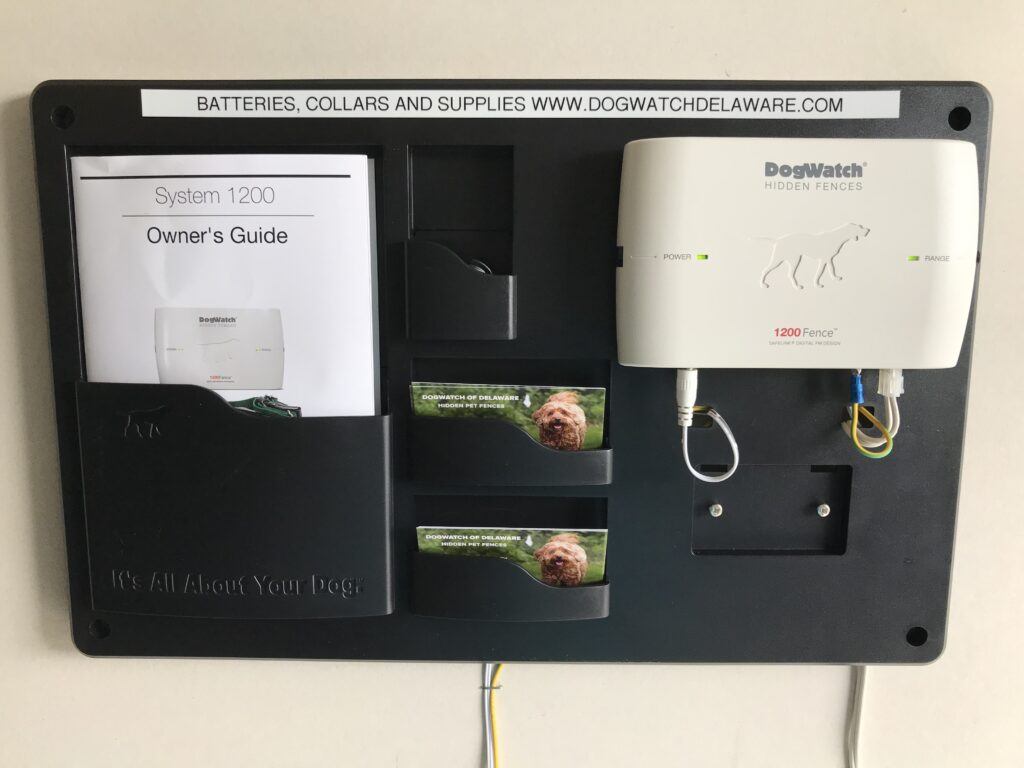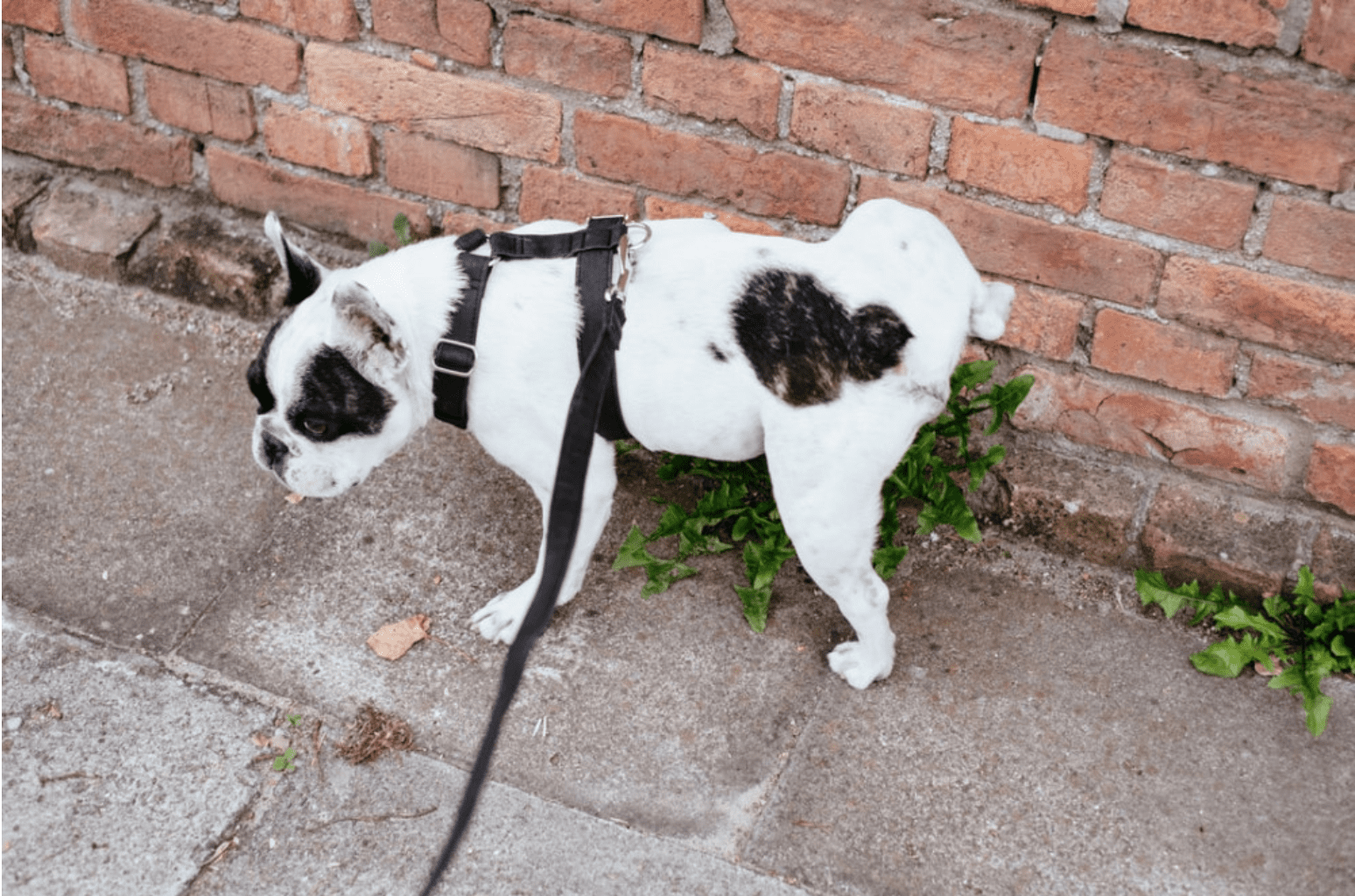There are good reasons to keep your dog on the property. Most importantly, it ensures the safety of your dog and others around your dog. Electric fences are just one of many options available to create an enclosure on your property. But what are the pros and cons of invisible electric dog fences?

Pros of invisible electric fences are low price, easy installation and maintenance, unobstructed view, and the possibility to adjust them in a way that suits you. There are also certain downsides, such as discomfort if your dog reaches the fence, inability to keep other animals outside, and possible behavioral issues due to frequent shocks.
We are now facing the difficult decision of building an invisible electric dog fence for our little corgi, Luna. The topic of electric fences triggers strong feelings among many dog owners.
We certainly don’t want her to get hurt. So, we wanted to carefully weigh the pros and cons of this decision before we pull the trigger.
Why Do Dog Owners consider Invisible Electric Dog Fences?
Dogs are curious creatures, and no matter how well they are trained, if something attracts their attention, they will most likely run towards it. That could be a problem if your property doesn’t have a fence.
The first day we came to our new house in Lewes, we accidentally left the back door open a crack, and our little corgi stormed outside and ran away after some rabbits in our new neighborhood.
We searched for her for over an hour. My wife and I looked at each other in disbelief as we thought we lost her. I finally found her, casually smelling around a neighbor’s backyard.

Traditional fences often have to be built based on strict subdivisions rules, and no matter how pretty they are, those fences may still be in the way of a beautiful view.
For example, our house is part of a homeowners association (HOA) that only allows 6-feet white vinyl fencing, which we think makes your yard look like an unappealing box.
The looks are not the only problem; the price range for a vinyl fence for our lot size would be $15,000 – $27,000.
To overcome this problem, you can buy an invisible electric dog fence.
What Are Invisible Electric Dog Fences?

My wife and I were walking one day in our prior neighborhood and saw a big lab dog in the front yard of a house running towards us and suddenly stop by the edge of the yard. It felt odd as it looked like he wanted to greet us.
The owner shouted —We have an invisible electric fence! That was the first time I heard about it.
I was curious and found out that these fences consist of three main parts:
- Wires are installed underground around the perimeter of your yard (or another area)
- Transmitters connected to the wires emit a signal
- A special dog collar with a receiver detects the signal
When a dog wearing the special collar gets too close to the wire, the collar will first make a sound to warn the dog, and if she doesn’t move away from the fence, the collar will deliver a light shock, also known as a static correction. With proper training, the dog will know where the property barrier is and won’t run away.
Let’s go over the Pros and Cons of invisible electric dog fences.
Pros of Invisible Electric Dog Fences

Electric fences is one of those topics that have dog owners divided. Some dog owners think of it as cruel; others see it as a good option.
I don’t believe most dog owners would choose an electric fence if they thought their dog would suffer. Here are the benefits of invisible electric dog fences.
Low Price
Although some electric dog fences are expensive, most electrical fences are quite affordable compared to traditional physical barriers. Depending on the model you choose, you may even install it yourself without professional help.
Maintenance is almost non-existent after the initial installation.
These fences don’t need a lot of power, so you shouldn’t feel a significant increase on your next electricity bill. Batteries in collars are usually rechargeable, so you will not have to buy new ones every time they stop working.
While some homeowners choose this option mainly to save money, I think most dog owners don’t mind paying a premium for it if that means better security and comfort for the dog.
Adaptability
Although it is recommended to have it professionally installed, if possible, this type of fence is not hard to install, which means you can move it if you want. That is, you can change the configuration to meet your future needs and desires.
Invisible fences may be installed in any terrain type, from rocks to woods, on any slope. This may be a good option when specific layouts can’t accommodate a traditional fence.
Because they are invisible, you can install them on just one part of the property, or cover some irregular area that would look very bad with the real fence.
Aesthetics
Some traditional fences can be beautiful, but not all properties are the same.
Having a physical fence, especially very tall ones for large dogs, can obstruct the view or look bad. Sometimes, the fence must be constructed in a way that it is up to code or subdivision specifications. In some areas, neighbors may complain about the fence.
There are numerous reasons why, but the fact is that a fence is not necessarily a good looking thing.
This is where invisible fences have an amazing advantage –you don’t see them!
Reliability
Invisible electric fences are straightforward devices, and there are no many things that can break. They are quite reliable and long-lasting. When the dog gets familiar with the invisible lines, in most cases, these fences work well.
Having an invisible fence prevents the dog from digging under it or climbing over it. It also decreases the possibility of human error. Having a traditional fence requires closing the door every time you go out. If you forget to do so, the dog may run away.
Dog Training
This factor is both the benefit and the downside of invisible fences. To successfully use it, you will have to invest some time and patience into training your dog.
The fence is not there to execute shocks 50 times a day. It is there as a precautionary measure when the dog is so distracted that he tries to go away. Most of the time, the dog should know his boundaries and learn where she can go.
Training the dog will ensure safety, and it will also help you have a productive relationship with your dog, where she will listen to your commands.
Always keep in mind that training is a process, and you should do it gently and respectfully.
Cons of Invisible Electric Dog Fences

There are a number of potential negative aspects to considered before deciding to install an electric dog fence.
Pain, Distress or Discomfort
Before the dog learns her boundaries, she will experience several unpleasant moments. If the shock was too mild, or if there was simply a light vibration, the dog may never stay within the property lines.
So, electric shocks are not pleasant, but how painful are they?
This is the core of the disagreement between dog owners/lovers. No decent dog owner wants to hurt a dog, though. The big problem is that we can not determine how uncomfortable the shock is because each dog is different.
I think each owner should do an individual assessment here. You know your dog best. If you feel that your dog is suffering more than an uncomfortable correction every time there is a shock, you should dismantle the electric fence and try another alternative.
Health Concerns
If the dog has any health issues, especially cardiovascular conditions, the fence can cause serious health problems, and in some cases, even death. This is especially important if your dog is old.
Before installing an invisible electric fence, you should consult a veterinarian to assess your dog’s health condition to see if it is safe to use the electrical fence.
Behavioral Issues
Dogs are social animals. Many of them want to play with other dogs or run toward people they love. If your dog sees a person or a dog friend, he may run and get shocked. He may think that his happiness and friendliness are bad.
This may be stressful, and your dog can become depressed, moody, angry, or even aggressive.
Once playful and happy dog could potentially develop fears towards noises or vibrations. Any psychological problem will eventually lead to physical problems. Anxious dogs sometimes bite and scratch themselves and develop skin issues.
Based on my research, this is not typical, but it doesn’t matter; if it happens to your dog, you will be devastated.
I think the key is to observe your dog behavior. If you see any significant changes in behavior, you should consider dismantling the electrical fence.
Fence Failure
Invisible electric fences depend on electricity. If there is a power failure, your property will suddenly have no boundaries. And just a few moments is enough for something bad to happen. The dog may run to the road, get hit by a car, or maybe even attack some other animal or human. The same can happen if the batteries in the collar are bad.
Hopefully, your dog is so well trained that when the power goes out, she won’t cross the invisible fence because of the habit.
Most of the time, you should be aware of when the power is out before your dog is in your yard. Either way, this is something important you need to be aware of.
Lack of Protection From Outside Influence
An electrical fence will keep your dog inside, but it will not prevent other animals from entering. Other dogs or even wild animals could attack your dog.
People can also approach your dog, and unfortunately, some of them do not have good intentions. Also, no matter how well behaved your dog is, he may accidentally injure approaching people, especially children.
Additional Training
As already mentioned, using invisible fences requires training, and it can be very time-consuming. The dog can be well trained, but the instincts are sometimes stronger.
Things and situations outside the invisible fence may be so tempting for some dogs that may not care to get shocked. Once they escape one time, they can do it again, and training may have to be intensified to be effective.
What We Have Decided
My wife and I have decided to try an electrical fence for our corgi. We researched companies and chose one with the best reviews: DogWatch Hidden Fences. It has a rating of 4.9 out of 5 out of 966 reviews in Trustpilot.
Disclaimer: I am not sponsored by DogWatch or earn any commission from them. We genuinely chose them after researching the internet and will update our progress in this blog post.
This is a company video where DogWatch Hidden Fence dealers from across the country share why they chose DogWatch. We found this video authentic and the dealers in the video seem to be honest.
The price for us will be $1,400 including installation, which is much better than the ugly alternative we have in our community, a 6-feet vinyl fence at a price range of $15,000 – $27,000.
The decision is not final. If this solution doesn’t work for our little corgi, we will be happy to loose the $1,400 and find a better alternative.
We are crossing our fingers. I will update this post with the results as soon as we have them.
Luna Training Progress
Day #1 Progress
John from DogWatch Hidden Fence in Delaware (www.dogwatchdelaware.com) came to our house and installed the fence underground using a machine designed to install invisible dog fencing. Then they installed the control box in our garage.
After that they covered the perimeter of our lot with white flags, setting two zones: one back yard zone and one front yard zone.
They sized the collar for Luna and completed the training for day 1.
The training exercise for day one starts with a very low shock level that Luna barely noticed, but is ideal to gradually make her understand that it is a true fence that shouldn’t be crossed.
The exercise is completed with two people. One holds the dog with a leash behind the fence and the other person is over the fence. The person holding the dog let her go towards the fence until the collar sound goes off following by the minor shock. Then he pulls her away from the fence. As if he is saving her from the flags.
Then the person over the fence grabs one flag and hits another flag screaming they are bad bad flags!! or something similar. This is repeated a few times. The goal is to make the dog think the flags are causing the tingling shock.
The training exercise takes no longer than 10 minutes.
My wife and I will do this training exercise for four days. Then John will come back to go over additional training.



Day #2 Through #4 Progress
The training went well, as expected. Luna is very aware of the flags, but not scared. She is just cautious about the flags as she gets near them.
So far, we have been playing with the leash to ensure she doesn’t go over the fence.
John from DogWatch will come next to see how we are doing.
Day #5 Training Progress

John came and validated that the training has gone well. He recommended increasing the intensity level from 1 to 2, which is about 20% more intensity.
I disagreed with that, and we are keeping it at level 1. John is the one with experience with many dogs, and I respect that, but we have known Luna for 4 years now. I believe level one is all she needs for this to work.
I could be wrong, and if that’s the case, we’ll consider increasing it to level 2, and I will take responsibility if she crosses the fence.
So, we played with a ball without the leash for 20 minutes, and it worked out well. The ball went over the fence a couple of times, and she did not cross. I am aware that this could change as she gets comfortable with it, and we will monitor it one day at a time.
By the way, I have felt level 1, and it doesn’t hurt at all. It vibrates, and it startles you a little the first time. If you have ever done the hand buzzer prank, that’s what it feels like.
Related Posts:




